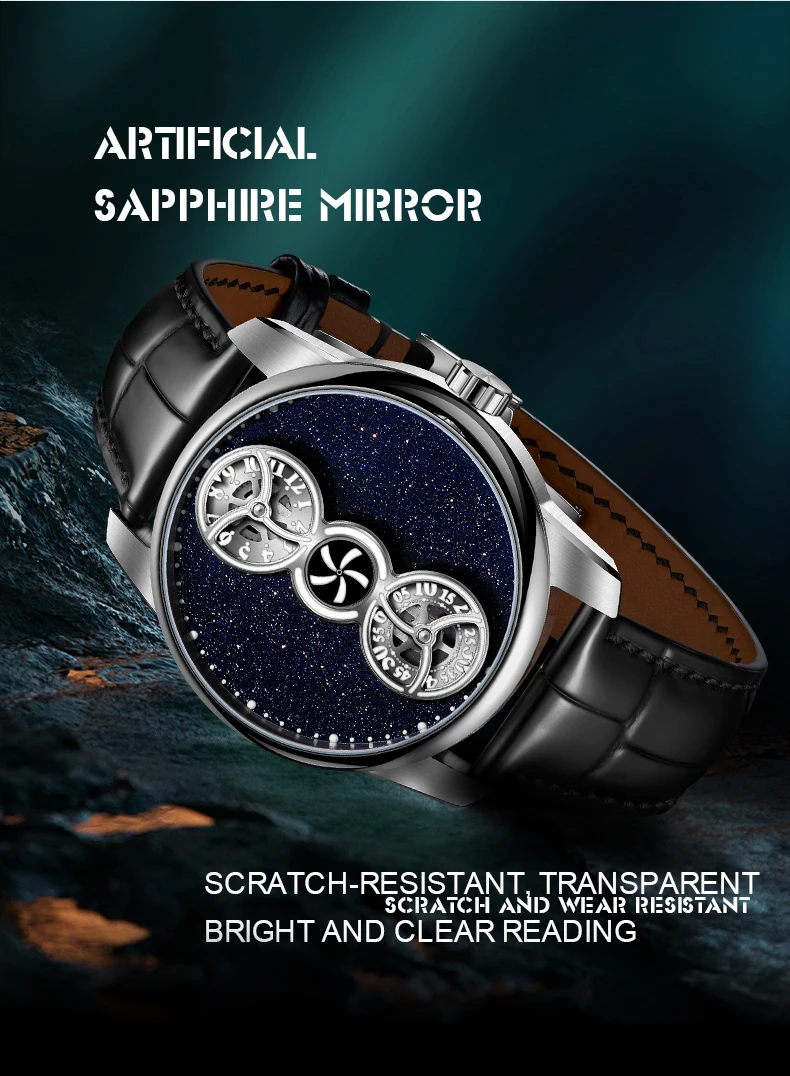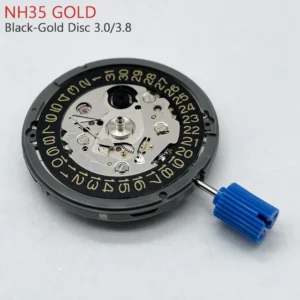The Essence of Timekeeping: Beyond Telling Time
A watch, at its most basic level, is a portable timekeeper worn on the wrist. Yet modern watches have evolved far beyond this simple definition. Today’s timepieces represent an intricate blend of engineering, craftsmanship, and design that goes well beyond merely telling the time.
What began centuries ago as practical tools for coordination and punctuality have transformed into sophisticated instruments with multiple capabilities. The journey from pocket watches to wristwatches marked just the beginning of this evolution. Modern watches now serve dual purposes – they remain functional tools while also becoming powerful expressions of personal style, status, and appreciation for craftsmanship.
Various professions rely on specialized watch features tailored to their specific needs. Pilots depend on watches with multiple time zone tracking, divers require timepieces with exceptional water resistance and timing bezels, and medical professionals often utilize watches with pulsometer scales for patient assessment. The distinction between a simple timepiece that only displays hours and minutes versus a modern watch with multiple complications represents how far watchmaking has advanced.
The appreciation for fine watches continues to grow as people discover the remarkable blend of classic vs minimalist dress watches and other styles that combine art and engineering. Whether functional tool or style statement, the modern watch represents centuries of innovation packed into a wearable form.
Watch Movements: The Heart of Every Timepiece
The movement of a watch – often called its “caliber” or “engine” – is the mechanism that powers all its functions. This critical component dictates everything from accuracy and maintenance requirements to the types of features a watch can offer.
Mechanical Movements
Hand-wound mechanical movements represent traditional watchmaking at its purest. These movements operate through a carefully wound mainspring that gradually releases energy through a series of gears and regulators. Requiring daily winding, these watches appeal to enthusiasts who appreciate the ritual of interaction with their timepiece. The craftsmanship is evident in hundreds of tiny components working in perfect harmony, often achieving accuracy within ±5-10 seconds per day.
Automatic Movements
Automatic (self-winding) movements build upon mechanical foundations by adding a rotor that captures energy from the wearer’s natural wrist movement. This innovation eliminated the need for daily hand-winding while preserving the craftsmanship enthusiasts cherish. These movements typically offer power reserves of 40-70 hours, allowing the watch to continue running when not worn overnight. Sharp Aspect focuses exclusively on automatic watches that showcase this perfect marriage of convenience and traditional craftsmanship.
Automatic movements feature remarkable chronograph movements with complete functionality that demonstrate watchmaking’s technical achievements.
Quartz Movements
Quartz movements revolutionized watchmaking by using battery power and quartz crystal oscillations to achieve superior accuracy (typically ±15 seconds per month). With fewer moving parts than mechanical counterparts, they require less maintenance and offer greater shock resistance. While lacking the emotional connection of mechanical movements, quartz watches provide reliable timekeeping at more accessible price points.
Solar Movements
Solar-powered movements represent a modern evolution, converting light energy into electrical power stored in rechargeable cells. These environmentally friendly options eliminate the need for battery changes while maintaining quartz accuracy. Their power reserve can extend for months in darkness, making them practical for everyday wear.
Hybrid Movements
Hybrid movements combine elements from different systems, such as mechanical movements with electronic regulation or quartz movements with automatic generation systems. These innovative approaches aim to capture the best of both worlds – the soul of mechanical watchmaking with the precision of modern technology.
Core Timekeeping Functions: The Foundation of Any Watch
While watches have evolved dramatically, their primary purpose remains displaying time accurately and legibly. The core timekeeping functions form the foundation upon which all other features are built.
- Analog Display: Traditional hour, minute, and second hands rotating around a dial
- Hour and minute hands are essential, while seconds hands are optional
- Hand styles vary widely: dauphine (tapered), baton (straight), sword (pointed), mercedes (with circular element), and others
Each style balances readability with aesthetic considerations
Digital Display: Numerical representation of time
- LCD (Liquid Crystal Display) or LED (Light Emitting Diode) technology
- Can display hours, minutes, seconds, and often additional information
Typically offers greater precision to fractions of seconds
Hybrid Display: Combines analog and digital elements
- Often pairs traditional hands with digital windows for additional information
- Provides traditional aesthetics with modern functionality
The dial layout significantly impacts both functionality and character:
* Traditional 12-hour format with hour markers (Arabic numerals, Roman numerals, or simple indices)
* 24-hour format for military/aviation applications
* Special layouts like sector dials, regulator dials (separate hour and minute displays), or jump-hour displays
Legibility remains crucial across all designs, with quintessential guide dress watch features emphasizing clean, readable dials. Quality watches incorporate luminous elements (applied materials that glow in darkness) on hands and hour markers, ensuring readability in all lighting conditions.
Case and Crystal: Protection and Personality
The watch case serves dual purposes – it houses and protects the delicate movement while expressing the watch’s personality through shape, size, and material.
Case Materials and Their Properties:
* Stainless Steel: The most common material, offering excellent corrosion resistance, durability, and value. The industry standard 316L grade provides hypoallergenic properties.
* Titanium: Approximately 40% lighter than steel with superior strength-to-weight ratio. Naturally hypoallergenic but more prone to scratching.
* Precious Metals: Gold (yellow, rose, white), platinum, and other precious metals combine luxury with investment value. Often heavier and softer than steel.
* Modern Materials: Ceramic (scratch-resistant but brittle), carbon fiber (lightweight and distinctive), and composites (combining material benefits).
Crystal Types:
* Sapphire: With a Mohs hardness of 9 (second only to diamond), sapphire crystal provides exceptional scratch resistance. Often features anti-reflective coating for improved legibility.
* Mineral Crystal: Glass treated with heat or chemicals for improved hardness. Balances durability and cost-effectiveness.
* Acrylic: Plastic crystal that scratches easily but resists shattering. Common in vintage designs and can be polished to remove scratches.
Case shape contributes significantly to a watch’s character. Round cases represent the most common and versatile design, while tonneau (barrel-shaped), cushion (rounded square), and rectangular cases each evoke distinct eras and styles of watchmaking.
Case construction directly relates to water resistance, with outdoor-ready watch cases features demonstrating how specialized designs enhance durability in challenging environments. Details like screw-down crowns, caseback design, and gasket quality all contribute to a watch’s protective capabilities.
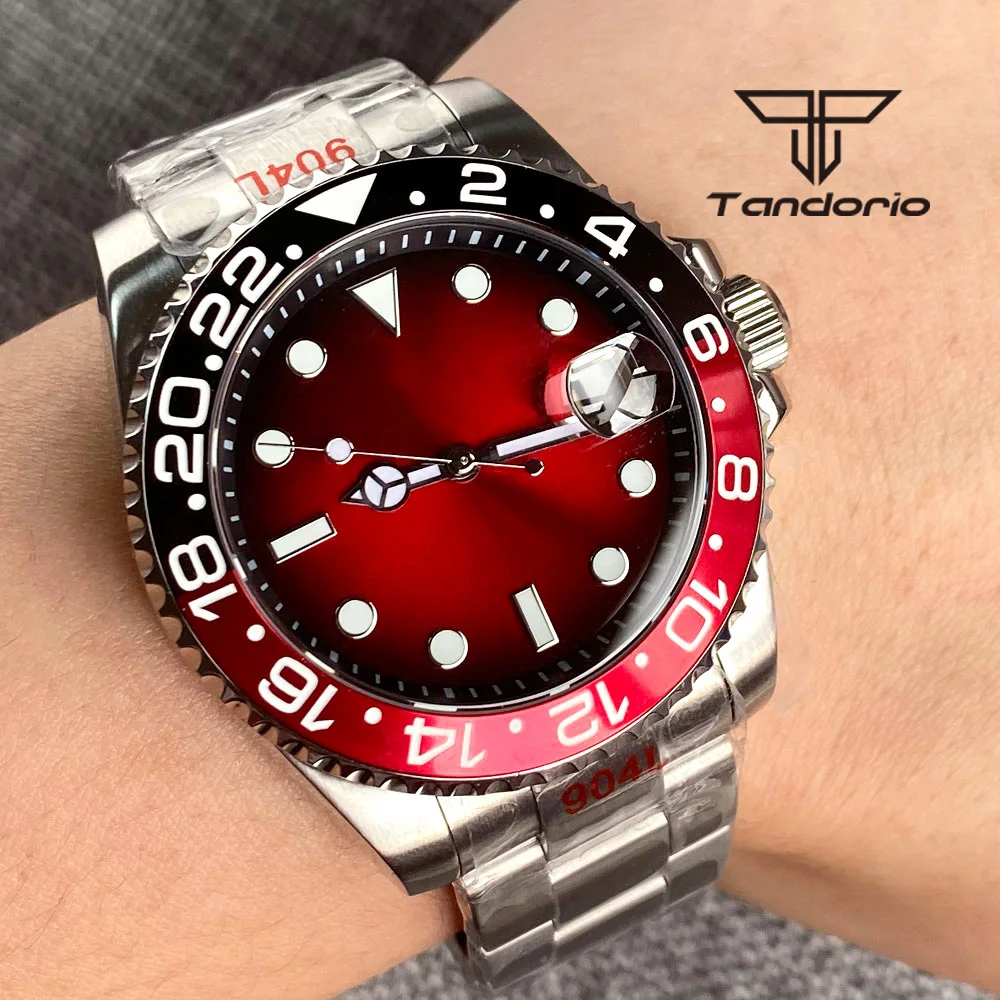
Water Resistance: From Splash-Proof to Deep Diving
Water resistance ranks among the most misunderstood yet critical watch features. The ratings indicate static pressure tested under laboratory conditions, not actual depth capabilities during active use.
Water Resistance Ratings Explained:
* 30m/3ATM: Resistant to small splashes, rain, and handwashing. Not suitable for swimming.
* 50m/5ATM: Appropriate for shallow swimming and light water activities. Not suitable for diving or high-impact water sports.
* 100m/10ATM: Suitable for recreational swimming, snorkeling, and water sports. Not ideal for high-pressure diving.
* 200m/20ATM and beyond: Suitable for serious water activities including scuba diving.
* ISO 6425 Certification: Required for true dive watches, involving testing beyond simple pressure tests.
Several components work together to create water resistance:
* Gaskets (rubber rings) create seals between case components
* Screw-down crowns prevent water ingress at the winding stem
* Case construction (particularly caseback attachment method)
Common misconceptions include believing the ratings represent exact depths and failing to realize that temperature changes, aging gaskets, and dynamic movement significantly affect water resistance. Even watches with high water resistance ratings require regular testing if used frequently in water.
Professional spec dive watches incorporate additional features like helium escape valves for professional saturation diving and extra-thick crystals to withstand pressure at extreme depths.
Calendar Functions: Tracking More Than Hours
Calendar complications extend a watch’s functionality beyond basic timekeeping to tracking days, dates, months, and even years.
Calendar Complexity Progression:
* Simple Date Display: The most common calendar function, showing the current date through a window (usually at 3 o’clock) or via a dedicated pointer hand.
* Day-Date Display: Shows both the date and the day of the week, typically through windows or subdials.
* Month Display: Adds month indication, often through a dedicated window or subdial.
* Annual Calendar: Sophisticated mechanism that accounts for months with 30 or 31 days, requiring adjustment only once per year (February).
* Perpetual Calendar: The pinnacle of calendar complications, automatically adjusting for month length and leap years until 2100.
Calendar displays appear through various mechanisms. Window displays provide clean, direct readings, while pointer dates (where a hand indicates the date on a numbered scale) offer traditional elegance.
The mechanical complexity behind these functions varies dramatically. A simple date requires relatively modest engineering, while perpetual calendars represent extraordinary achievements with hundreds of components working together to track irregular calendar cycles.
Quality watches feature precisely timed date changes that occur near midnight rather than gradually over several hours. Many modern watches incorporate quick-set date mechanisms, allowing adjustment without cycling through 24 hours of time.
Day-date automatic watches combine practicality with sophisticated engineering, making them popular choices for both everyday wear and collections.
Chronograph Functions: Precision Timing Capabilities
A chronograph integrates stopwatch functionality within a standard wristwatch, allowing precise measurement of elapsed time while maintaining normal timekeeping.
Basic Chronograph Components:
* Start/stop pusher (typically at 2 o’clock position)
* Reset pusher (typically at 4 o’clock position)
* Central chronograph seconds hand
* Minute and sometimes hour totalizers (subdials that count elapsed minutes and hours)
Chronograph Variations:
* Standard Chronograph: Basic stopwatch functionality with separate start, stop, and reset operations.
* Flyback Chronograph: Allows instantaneous reset and restart with a single pusher press – originally designed for pilots who needed rapid sequential timing.
* Split-Seconds Chronograph (Rattrapante): Features two overlapping chronograph hands that can split to measure intermediate times while continuing to track total elapsed time.
Many chronographs incorporate additional scales on their dials or bezels:
* Tachymeter: Measures speed over a known distance (typically calculating units per hour)
* Telemeter: Calculates distance based on the speed of sound (useful for determining storm distance)
* Pulsometer: Specialized scale for medical professionals to calculate heart rate
The mechanical complexity of chronographs makes them particularly admired among watch enthusiasts. A chronograph movement may contain 50-100 more parts than a standard movement, requiring precise engineering and assembly.
Automatic chronograph watches represent a perfect blend of traditional craftsmanship and practical functionality, making them popular among collectors and everyday users alike.
Classic Automatic Dress Watches, Day Date Automatic Watches, Perpetual Calendar Automatic Watches
Price range: $540.60 through $574.60 Select options This product has multiple variants. The options may be chosen on the product pageAutomatic Chronograph Watches, Chronograph Pilot Watches
Price range: $233.36 through $237.58 Select options This product has multiple variants. The options may be chosen on the product pageClassic Automatic Dress Watches, GMT Automatic Watches, GMT Pilot Watches
Price range: $1,240.86 through $1,463.33 Select options This product has multiple variants. The options may be chosen on the product pageAutomatic Chronograph Watches, Classic Style Dive Watches
$3,053.06 Select options This product has multiple variants. The options may be chosen on the product pageBronze Automatic Watches, Military Inspired Automatic Watches, Professional Spec Dive Watches
Price range: $1,442.21 through $1,442.82 Select options This product has multiple variants. The options may be chosen on the product pageDay Date Automatic Watches, Gold Tone Automatic Watches
$138.24 Select options This product has multiple variants. The options may be chosen on the product page
Travel and Time Zone Features: Watches for a Global World
As international travel and global business became commonplace, watches evolved to track multiple time zones simultaneously, providing essential functionality for travelers and professionals working across borders.
Different approaches to displaying multiple time zones include:
* GMT/Second Time Zone Function: Features an additional hand that completes one rotation every 24 hours, pointing to a 24-hour scale to show a second time zone without confusion between AM and PM.
* Dual Time Displays: Incorporates a separate subdial or additional hour/minute hands to show a second time zone with complete hours and minutes.
* World Time Watches: Display multiple time zones simultaneously via a rotating city disc representing 24 global time zones, allowing at-a-glance reading of time worldwide.
The distinction between “true GMT” and “caller GMT” functions reflects how the hands can be adjusted. True GMT watches allow independent adjustment of the local hour hand while traveling, while caller GMT watches adjust the 24-hour hand independently while keeping local time stable.
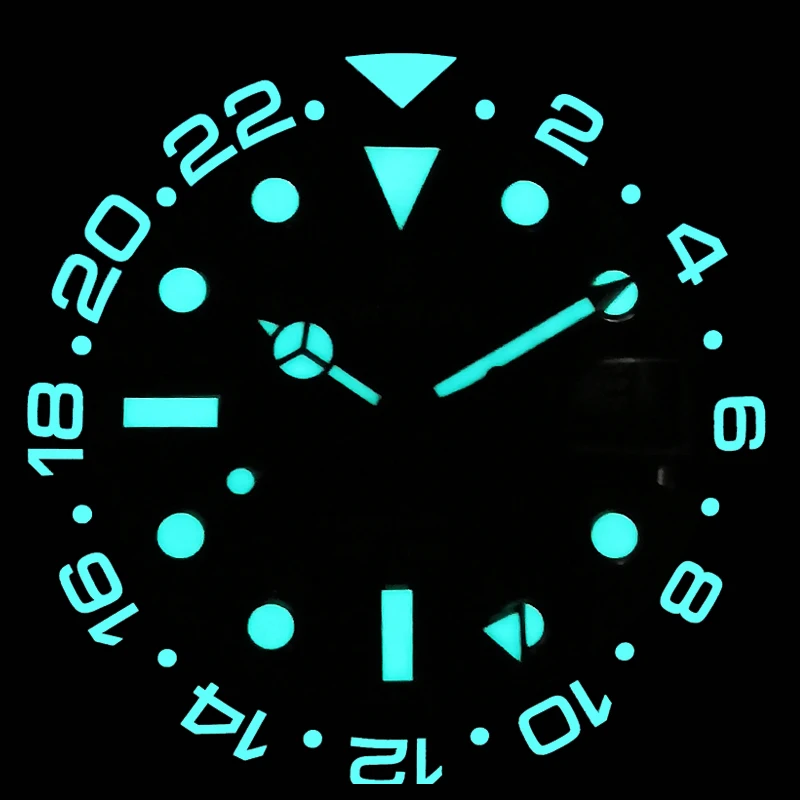
GMT automatic watches remain essential tools for pilots, business travelers, and anyone maintaining connections across different time zones. These watches combine practicality with sophisticated engineering to address the realities of our interconnected world.
Bezels: Functional Rings with Multiple Uses
The bezel – the ring surrounding the crystal – offers both protection and functionality, often serving as an analog computer for various calculations.
Bezel Types and Functions:
* Fixed Bezels: Primarily decorative or protective, sometimes featuring tachymeter scales for chronographs.
* Rotating Dive Bezels: Unidirectional (rotating only counterclockwise) as a safety feature for divers, ensuring that accidental movement can only overestimate remaining air supply.
* GMT Bezels: Bidirectional with 24-hour markings, working in conjunction with GMT hands to track additional time zones.
* Countdown Bezels: Calibrated to rotate counterclockwise, marking time remaining rather than elapsed time.
* Slide Rule Bezels: Complex circular slide rules that perform multiplication, division, and various conversions (popular in aviation watches).
Bezel materials significantly impact durability and aesthetics. Aluminum inserts offer lightweight color options but scratch relatively easily. Ceramic provides superior scratch resistance but can crack under impact. Sapphire crystal bezels combine scratch resistance with elegant light refraction.
Understanding the differences between GMT vs dive watches helps appreciate how bezel design serves specific functional needs. The tactile functionality of bezels – their grip pattern, rotation resistance, and click mechanism – directly affects usability in real-world conditions.
Advanced Complications: The Art of Watchmaking
In watchmaking terminology, a “complication” refers to any function beyond simple hours and minutes. Advanced complications showcase extraordinary technical achievement and artistic expression.
Prestigious Complications:
* Moon Phase Display: Tracks the lunar cycle through an aperture showing the current moon phase. Beyond practical application, these displays demonstrate artistic craftsmanship.
* Minute Repeaters: Chime the time on demand using tiny hammers and gongs, with different tones for hours, quarters, and minutes. Developed before electric lighting for telling time in darkness.
* Tourbillons: Rotating cages that counter the effects of gravity on accuracy by continuously rotating the escapement. Originally developed for pocket watches, they now represent pinnacles of watchmaking skill.
* Equation of Time: Displays the difference between standard time (consistent 24-hour days) and actual solar time (which varies throughout the year).
* Power Reserve Indicators: Display the remaining energy in the mainspring, similar to a fuel gauge.
These complications often require hundreds of additional components, each manufactured and finished to extraordinary tolerances. Despite having modern alternatives (like checking a phone for lunar phases), these mechanical marvels remain valued for their artistry and engineering excellence.
Moonphase automatic watches exemplify how traditional watchmaking elevates functional elements into works of art, combining astronomical tracking with aesthetic beauty.
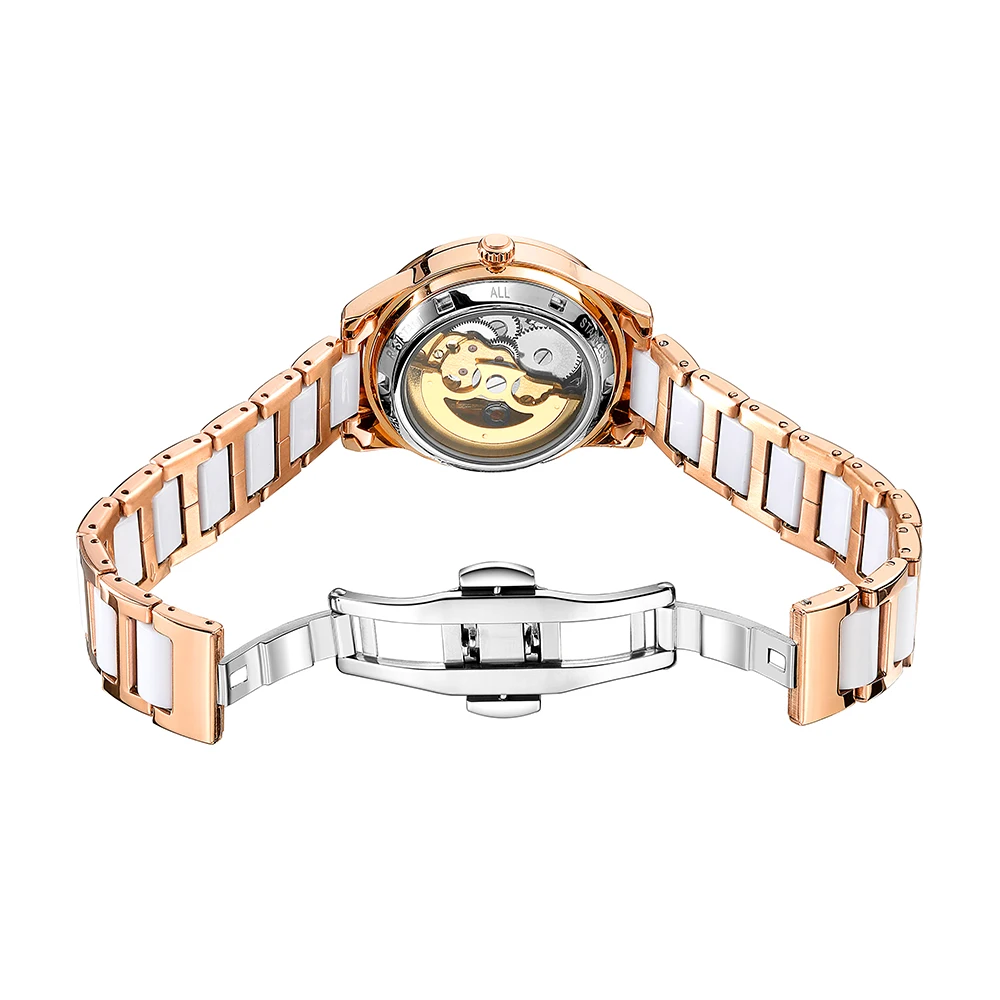
Modern Innovations: Bridging Tradition and Technology
Traditional watchmaking continues to evolve, incorporating modern advancements that enhance performance while maintaining mechanical integrity and traditional aesthetics.
Recent innovations in mechanical watches include:
* Anti-magnetic Materials: Silicon components and special alloys that resist magnetic fields, protecting accuracy in our electronics-filled world.
* Silicon Components: Hairsprings and escape wheels made from silicon provide superior performance through lightweight, anti-magnetic, and lubricant-free operation.
* Advanced Lubricants: Synthetic oils that extend service intervals by maintaining viscosity longer than traditional watch oils.
* Innovative Escapements: New approaches to the heart of mechanical movements, improving efficiency and accuracy beyond traditional lever escapements.
* Enhanced Luminous Materials: Super-LumiNova and similar compounds that provide brighter, longer-lasting illumination without the radioactivity of vintage luminous materials.
These advancements demonstrate how traditional watchmaking adapts without abandoning its core principles. While smartwatches represent a different category altogether, mechanical watches continue their evolutionary path through materials science and engineering refinement.
Titanium automatic watches exemplify how modern materials enhance the wearing experience through lightness and hypoallergenic properties while maintaining traditional mechanical operations.
How to Choose Watch Features Based on Your Lifestyle
Selecting the right watch features requires understanding how your lifestyle and preferences align with different watch capabilities.
For professional environments, consider:
* Is legibility essential in your work? Look for high-contrast dials and appropriate sizing.
* Do you travel across time zones? GMT or world time functions might prove valuable.
* Is your workplace formal or casual? This affects appropriate case materials and overall styling.
For active lifestyles, evaluate:
* Will the watch encounter water? Choose appropriate water resistance ratings.
* Are impacts likely? Consider shock resistance and case durability.
* Will you need timing functions? Chronographs or timing bezels might be useful.
Personal expression matters too. Consider how classic dress watch minimalist styles might complement your wardrobe and personal aesthetic. A watch worn daily should reflect your personality while meeting practical needs.
Budget considerations require balancing desired features against cost implications. Complications like chronographs and perpetual calendars significantly increase prices. Similarly, material choices like precious metals dramatically affect cost.
Remember that feature complexity often increases maintenance requirements and potential repair costs. Finding the right balance between functionality and practicality ensures lasting satisfaction with your selection.
Frequently Asked Questions About Watch Features
Do mechanical watches need batteries?
No, mechanical watches are powered by a wound mainspring that gradually releases energy through the movement. This eliminates the need for batteries but requires either manual winding or wearing the watch regularly (for automatic movements).
What makes a watch “automatic”?
An automatic watch contains a semicircular weight (rotor) that rotates with the natural movement of your wrist. This rotation winds the mainspring, eliminating the need for daily manual winding as long as the watch is worn regularly.
How often should I service my watch?
Most manufacturers recommend servicing mechanical watches every 5-7 years, though this varies by brand and usage. Quartz watches typically require less frequent servicing but need battery replacement every 1-3 years unless solar-powered.
Can I shower with my 50m water-resistant watch?
Despite the rating suggesting it’s suitable for swimming, showering exposes watches to hot water, soap, and steam that can deteriorate gaskets. Even watches with moderate water resistance are best kept away from showers.
What’s more accurate: quartz or mechanical?
Quartz watches are significantly more accurate, typically gaining or losing just 15-30 seconds per month. High-quality mechanical watches might gain or lose 5-10 seconds per day. However, many enthusiasts appreciate mechanical watches for their craftsmanship rather than superior accuracy.
Some watches incorporate military watch features with engineering for extreme conditions, making them particularly reliable in challenging environments.

